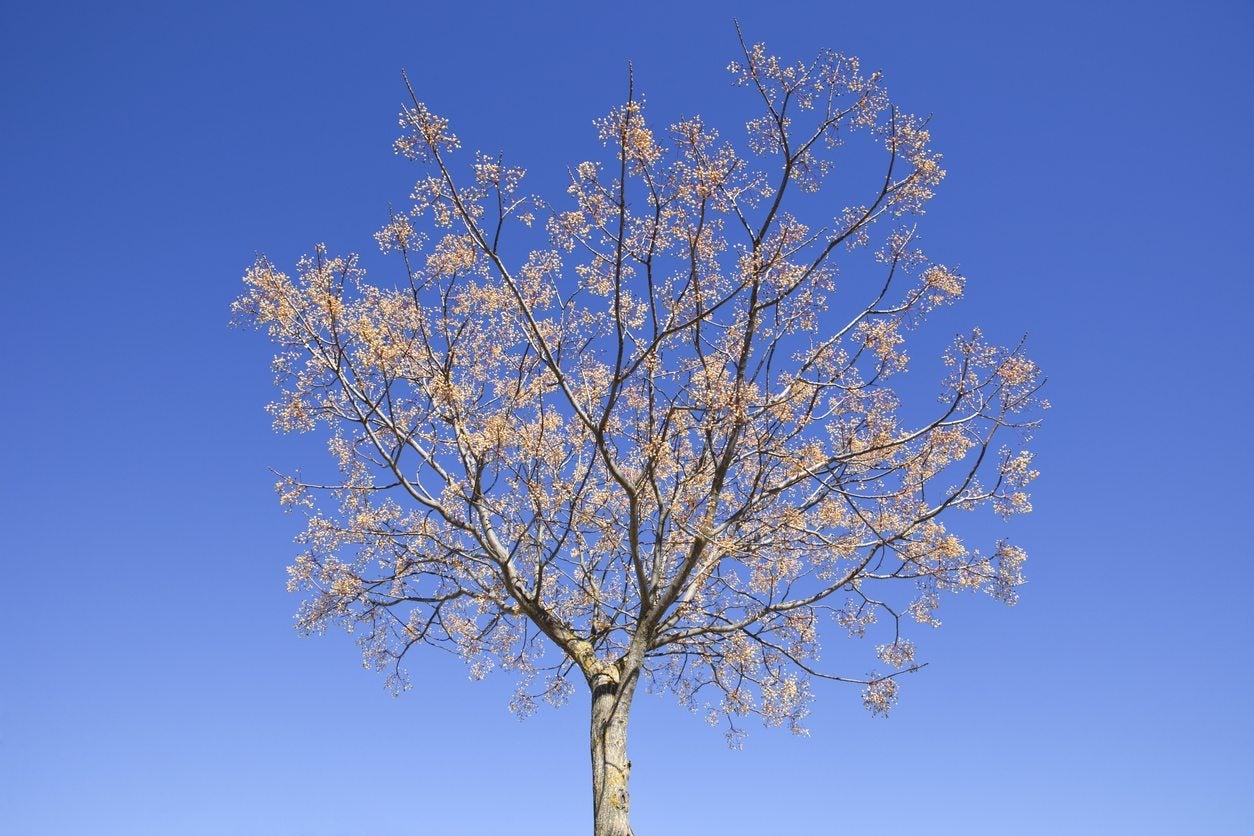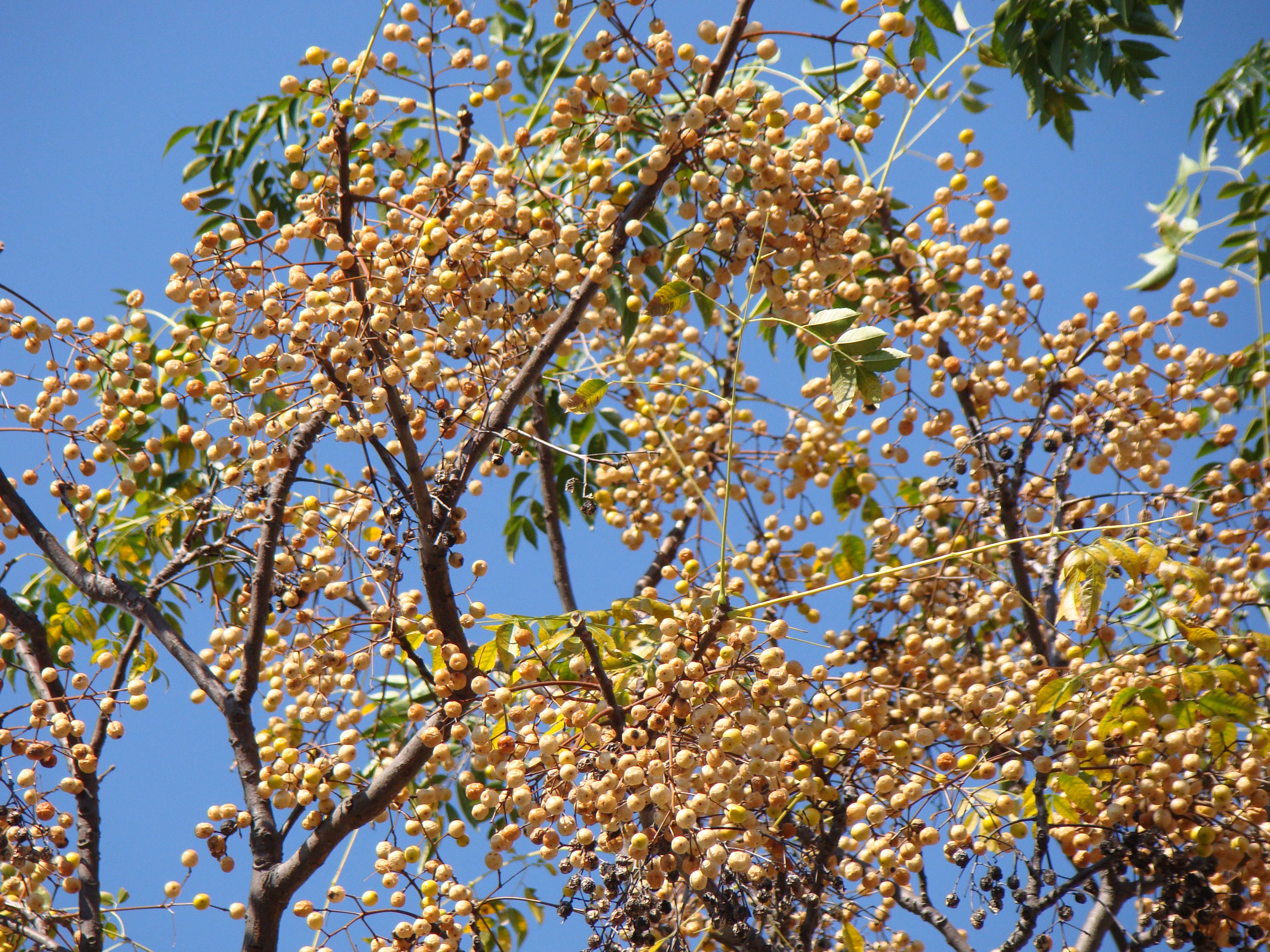Bead Tree Information – Tips For Chinaberry Control In Landscapes


What is chinaberry bead tree? Commonly known by a variety of names such as chinaball tree, China tree, or bead tree, chinaberry (Melia azederach) is a deciduous shade tree that grows in a variety of difficult situations. Like most non-native plants, it is highly resistant to pests and disease. This tree may be considered friend or foe, depending on location and growing conditions. Read on for more information about this tough, sometimes problematic, tree.
Chinaberry Bead Tree Information
Native to Asia, chinaberry was introduced to North America as an ornamental tree in the late 1700's. Since that time, it has naturalized across much of the south in the U.S. An attractive tree with brownish red bark and a rounded canopy of lacy foliage, chinaberry reaches heights of 30 to 40 feet (9-12 m.) at maturity. Loose clusters of small purple blooms appear in spring. Hanging bunches of wrinkly, yellow-brown fruit ripens in autumn and provide feed for birds throughout the winter months.
Is Chinaberry Invasive?
Chinaberry grows in USDA plant hardiness zones 7 through 10. Although it is attractive in the landscape and is frequently welcome in urban settings, it can form thickets and become weedy in disturbed areas, including natural areas, forest margins, riparian areas, and roadsides. Home gardeners should think twice before growing a bead tree. If the tree spreads via root sprouts or bird-dispersed seeds, it can threaten biodiversity by outcompeting native vegetation. Since it is non-native, there are no natural controls by diseases or pests. The cost of chinaberry control on public lands is astronomical. If growing a chinaberry tree still sounds like a good idea, check with your local university cooperative extension agent first, as Chinaberry may be banned in certain areas and is generally not available in nurseries.
Chinaberry Control
According to cooperative extension offices in Texas and Florida, the most effective chemical control is herbicides containing triclopyr, applied to bark or stumps within five minutes after cutting the tree. Applications are most effective in summer and fall. Multiple applications are usually required. Pulling seedlings isn’t usually effective and may be a waste of time unless you can pull or dig every little root fragment. Otherwise, the tree will regrow. Also, hand pick the berries to prevent disbursal by birds. Dispose of them carefully in plastic bags.
Additional Bead Tree Information
A note about toxicity: Chinaberry fruit is toxic to humans and pets when eaten in large quantities and may cause stomach irritation with nausea, vomiting, and diarrhea as well as irregular breathing, paralysis, and respiratory distress. The leaves are also toxic.
Gardening tips, videos, info and more delivered right to your inbox!
Sign up for the Gardening Know How newsletter today and receive a free copy of our e-book "How to Grow Delicious Tomatoes".

A Credentialed Garden Writer, Mary H. Dyer was with Gardening Know How in the very beginning, publishing articles as early as 2007.
-
 Looking For Plants To Give You The Soft And Fuzzies? Try These 5 Fuzzy Leaf Plant Options
Looking For Plants To Give You The Soft And Fuzzies? Try These 5 Fuzzy Leaf Plant OptionsLovers of texture, drama, silver foliage and tactile plants will adore these special sensory garden additions. These fuzzy leaf plant options will leave you all aglow
By Susan Albert
-
 Get Ready For A Summer Of Hummers! Grow These Full Sun Hummingbird Plants and Flowers
Get Ready For A Summer Of Hummers! Grow These Full Sun Hummingbird Plants and FlowersIf you’re lucky enough to enjoy a sunny backyard, make sure you are maxing out on your pollinator opportunities and grow these full sun hummingbird plants and flowers
By Tonya Barnett
